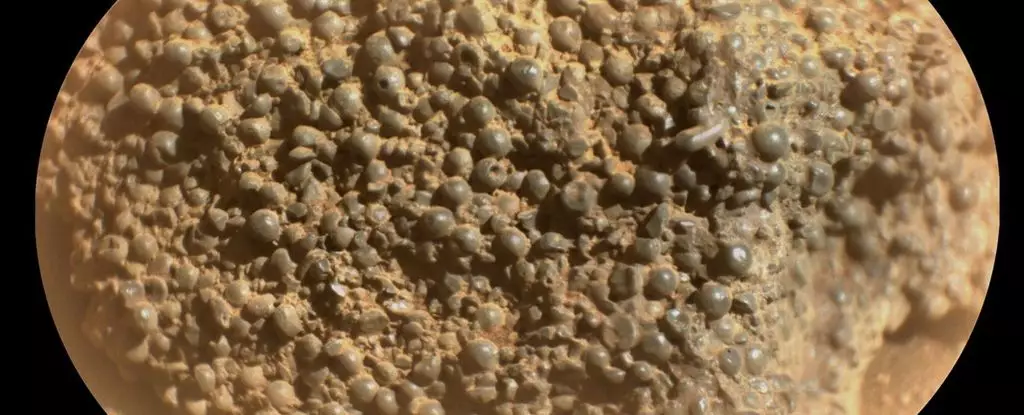Mars continues to be an enigma, consistently presenting scientific discoveries that challenge our understanding of the planet’s geology and, by extension, its history. The Perseverance rover recently stumbled upon an extraordinary find at Broom Point along the slopes of Witch Hazel Hill: a peculiar rock formation known as St. Pauls Bay. This formation has sparked excitement and intrigue among scientists due to its unique appearance, resembling an aggregation of dark gray spheres that appear almost gelatinous. The aesthetic resemblance to ‘frogspawn’ is not merely superficial; it embodies the essence of what the Martian landscape can offer in terms of geological diversity.
Geological Anomalies: What Makes St. Pauls Bay Unique?
The rock’s spherical formations are a sight to behold and quite stunning in their oddity. While Earth features a variety of botryoidal formations—characterized by their spherical clusters—St. Pauls Bay stands out as a Martian anomaly. The formation’s resemblance to well-known terrestrial minerals, such as grape agate and hematite, raises crucial questions: How did such ornate structures come to exist on a barren planet? Unlike their Earthly counterparts, the processes behind their formation on Mars remain obscure. This discrepancy ignites a sense of intrigue, compelling researchers to investigate whether they resulted from volcanic activity, meteorite impacts, or aqueous influences.
The Gender of Geological Forces: Fire or Water?
To assess St. Pauls Bay’s origins accurately, one must dissect the dual possibilities of elemental forces: fire and water. On Earth, spherules often form in watery environments, such as hematite-rich concretions manifesting as “blueberries” discovered by earlier rover missions. In contrast, St. Pauls Bay refuses to divulge its secrets, complicating the task of discerning its geological narrative. There are speculation and hypotheses surrounding its formation, but the lack of contextual data, as it is a float rock, leaves scientists guessing. The nearby dark layer of rock detected from orbit suggests a possible birthplace, but more exploration is essential before drawing conclusions.
Further Investigations: The Quest for Knowledge
Anticipation builds for the day when Perseverance can inch closer to St. Pauls Bay. The rover’s ability to analyze this curious rock further could illuminate our understanding of Martian geology significantly. Such investigations are not just about collecting data but also about nurturing the human spirit of inquiry that drives scientific progress. These efforts underscore the broader pursuit of knowledge: connecting historical geological events on Mars to our understanding of planetary evolution, and perhaps, the conditions needed for life.
In essence, Mars remains a captivating planet rife with mysteries, and St. Pauls Bay is just one example of its geological wonders. The burgeoning excitement surrounding this find emphasizes the ingenuity of our exploration missions, illustrating that even in the face of ambiguity, knowledge can be cultivated through persistent inquiry and exploration.


Leave a Reply